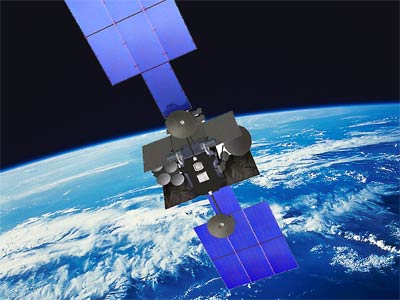Military space policy in 2012by Taylor Dinerman
|
| By 2010 the question may not be what can we afford to launch, but how can we take advantage of the new lower prices? |
Meanwhile, both long-range missiles and military space systems are going to proliferate. Even relatively poor nations in unsettled parts of the world are going to want to have their own “National Technical Means”, to use the old arms control euphemism. Smaller states in Asia and Africa are going to be the next nations to decide they want military space assets of their own. Malaysia and South Africa will both probably choose to commit big time to new reconnaissance satellites.
The US will probably not have deployed any “space weapons” but, in spite of relentless political posturing, the Defense Department will have done everything it can to prepare for the inevitable war in space. However, the President will not have been able to put much of a policy stamp on America’s principal military space programs. The early warning SBIRS satellites will finally have reached geosynchronous orbit and Air Force Space Command will still be trying to find new ways to use them to support America’s air ground and naval forces. If the TSAT program survives at all, it will still be trying to solve the nearly impossible problem of expanding demand for secure communications within the physical and legal limits of the radio frequency world.
Operationally Responsive Space will, by 2012, have produced a small number of useful satellites, but will not have revolutionized the field. After a major embarrassment caused by the publication of a satellite image that directly contradicted the words of at least one major world leader, commercial remote sensing satellites will have improved and will multiply as more and more politicians will want to have their own private access to overhead imagery.
The heavy, expensive, and fantastically capable NRO optical spy satellites in low Earth orbit (LEO) will be just as vulnerable in 2012 at they are in 2008. Neither a treaty nor any form of international agreement will credibly protect them from harm and, in the unlikely event that the President and Congress agree to a program that would give them a form of active protection, the slow-moving procurement bureaucracy will insure that such systems will take be at least a decade before they are operational.
In 2012 the US will still be using the Atlas 5 and Delta 4 EELVs as its main space launch vehicles. For smaller payloads, though, the US will be even more spoiled for choice than it is now. NASA’s COTS program may insure that there will be three viable Delta-2-class launch vehicles available: an improved Delta 2, the Orbital Sciences Taurus 2, and the SpaceX Falcon 9. By 2010 the question may not be what can we afford to launch, but how can we take advantage of the new lower prices?
One thing the President and his (at least for the next four years it’s going to be “his”) Secretary of Defense will be able to do is to reshuffle the organizational charts. This is an easy way to make it look as if you are doing something useful—and sometimes it is actually meaningful. In March 1942, when George C. Marshall reorganized the Army into three large commands that reported directly to him, he cut the ground from under the old, unresponsive bureaucracy and laid the basis for America’s success in World War 2. In 1979 Jimmy Carter’s government was widely derided for setting up Central Command to deal with the Middle East—at the time he was criticized for just “throwing a headquarters at the problem”—but today US operations in that area would be unthinkable without it.
| On many of the big issues the new chief executive will find his hands tied, but on future policy he can make a substantial difference. |
It is highly unlikely that a new space force will have been created, but the current command structure may not last much longer. Strategic Command needs to either clear up its mission focus or someone in Washington will do it for them. It is hard to see how control of the nuclear forces and missile defense fits comfortably with control of the GPS and communications satellite constellations, while at the same time the intelligence gathering space systems are under the command of the “Intelligence Community”.
The next Secretary of Defense is going to find it hard to deal with this conundrum and unless he or she can come up with a miracle, it is unlikely that a satisfactory answer will be found by 2012. In fact, the new administration will have its hands full just dealing with the fallout from its predecessors. The Bush Administration has spent most of its eight years in office coping with the decision made by others, especially the Clinton administration’s decision regarding SBIRS, the major NRO programs, and the joint civil/military weather satellite NPOESS.
Whoever gets elected this year will face problems with the TSAT communications architecture and Space Radar. He will also need to give the DoD some directions on it future launch vehicle development policy. Does the US want to get back into the RLV business in a big way? Are the small “NewSpace” development firms ready to play a major role?
On many of the big issues the new chief executive will find his hands tied, but on future policy he can make a substantial difference. In science and technology policy, small decisions made in 2009 and 2010 will have big effects later, and that is the way history judges if a President and an administration have been a success or not.
